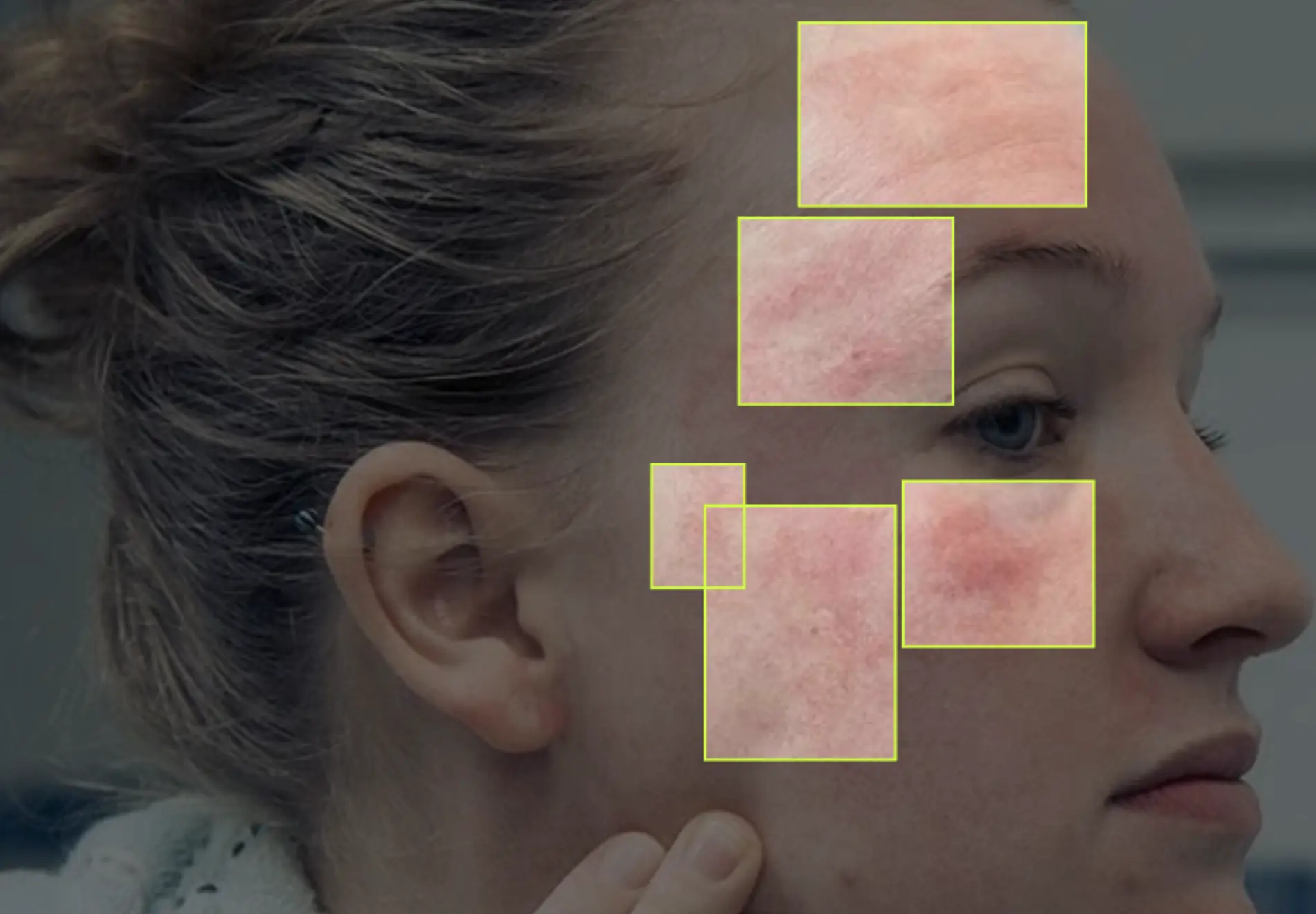Understanding Red Areas on the Face
Causes, Types, and Treatment Solutions

Red areas on the face can be one of the most concerning and visible skin issues. Understanding the root cause of your facial redness is crucial for finding the right treatment approach. With modern AI-powered skin analysis like FaceSkinAI, we can now identify different types of redness patterns and recommend targeted solutions for clearer, calmer skin.
What Causes Red Areas on the Face?
Facial redness occurs when blood vessels near the surface of your skin dilate or become inflamed. This can happen for various reasons, from temporary environmental factors to underlying skin conditions. The key to treating facial redness effectively is identifying whether it's acute (temporary) or chronic (ongoing), and understanding the specific triggers or conditions causing it.
Red areas on the face can appear as patches, streaks, bumps, or overall flushing. The location, pattern, and accompanying symptoms can provide important clues about the underlying cause and help determine the most effective treatment approach.
Important: While many cases of facial redness are cosmetic concerns, persistent or severe redness should be evaluated by a dermatologist, as it may indicate an underlying skin condition that requires medical treatment.
Common Types of Facial Redness
Rosacea
A chronic inflammatory condition causing persistent redness, typically on the central face. It may include visible blood vessels, bumps, and burning sensations. Often triggered by sun, heat, alcohol, or spicy foods.
Contact Dermatitis
Allergic or irritant reactions to skincare products, cosmetics, or environmental factors. Appears as red, inflamed patches that may be itchy, burning, or swollen.
Seborrheic Dermatitis
A common condition causing red, scaly patches, particularly around the nose, eyebrows, and hairline. Often accompanied by flaking and may worsen with stress or hormonal changes.
Acne-Related Redness
Inflammation from active breakouts or post-inflammatory erythema (PIE) from healing acne. Can appear as red spots, patches, or overall facial flushing.
Sun Damage
Chronic UV exposure can cause persistent redness, broken capillaries, and uneven skin tone. Often appears as patchy redness or a ruddy complexion.
Sensitive Skin Reactions
Temporary redness from environmental factors like wind, cold, heat, or harsh skincare products. Usually resolves once the trigger is removed.
Identifying Your Redness Triggers
Understanding what triggers your facial redness is crucial for effective management. Common triggers include:
Environmental Triggers
Sun exposure, extreme temperatures, wind, humidity changes, and pollution can all trigger facial redness, especially in sensitive individuals.
Lifestyle Factors
Alcohol consumption, spicy foods, hot beverages, stress, lack of sleep, and intense exercise can cause facial flushing and worsen existing redness.
Skincare Products
Harsh cleansers, alcohol-based toners, strong actives (retinoids, acids), fragrances, and physical scrubs can irritate sensitive skin and cause redness.
Hormonal Changes
Menstruation, pregnancy, menopause, and hormonal medications can trigger or worsen facial redness in some individuals.
Treatment Strategies for Red Areas
1. Gentle Skincare Approach
The foundation of treating facial redness is adopting a gentle, minimalist skincare routine that focuses on calming inflammation and strengthening the skin barrier.
Key Principle: Less is more when dealing with facial redness. Simplify your routine and introduce new products slowly to identify what works for your skin.
2. Anti-Inflammatory Ingredients
Look for skincare products containing ingredients known to calm inflammation and reduce redness:
Niacinamide
A form of vitamin B3 that reduces inflammation, strengthens the skin barrier, and can significantly decrease redness over time. Start with 5-10% concentration.
Azelaic Acid
An anti-inflammatory ingredient that's particularly effective for rosacea and acne-related redness. Available in prescription strengths or over-the-counter formulations.
Green Tea Extract
Rich in antioxidants and anti-inflammatory compounds. Can be found in serums, moisturizers, or used as a DIY compress for immediate relief.
Ceramides & Hyaluronic Acid
Help repair and strengthen the skin barrier, reducing sensitivity and the likelihood of irritation-induced redness.
3. Sun Protection is Critical
UV exposure is one of the most common triggers for facial redness and can worsen existing conditions. Use a broad-spectrum SPF 30+ daily, and consider mineral sunscreens with zinc oxide or titanium dioxide, which are less likely to irritate sensitive skin.
What to Avoid When Dealing with Facial Redness
Avoid these common mistakes that can worsen facial redness:
• Don't use harsh scrubs or exfoliating brushes on inflamed skin
• Avoid alcohol-based products, strong fragrances, and essential oils
• Skip hot water when cleansing – use lukewarm water instead
• Don't over-treat with multiple active ingredients at once
• Avoid picking at or rubbing red, irritated areas
• Don't ignore persistent redness – seek professional help if needed
Lifestyle Modifications for Managing Redness
Diet Considerations
Keep a food diary to identify triggers. Common culprits include spicy foods, alcohol, hot beverages, and foods high in histamines.
Stress Management
Chronic stress can worsen inflammatory skin conditions. Practice stress-reduction techniques like meditation, yoga, or regular exercise.
Environmental Protection
Protect your face from wind, extreme temperatures, and pollution. Use scarves or face masks in harsh weather conditions.
Sleep & Hydration
Adequate sleep and proper hydration support skin barrier function and can help reduce inflammation-related redness.
The Path to Calmer Skin
Managing facial redness requires patience, consistency, and often some detective work to identify your specific triggers and effective treatments. While it can be frustrating, remember that most types of facial redness can be significantly improved with the right approach.
✨ Identify red areas with FaceSkinAI
Get personalized AI skin analysis and tailored product recommendation.
Sign Up



